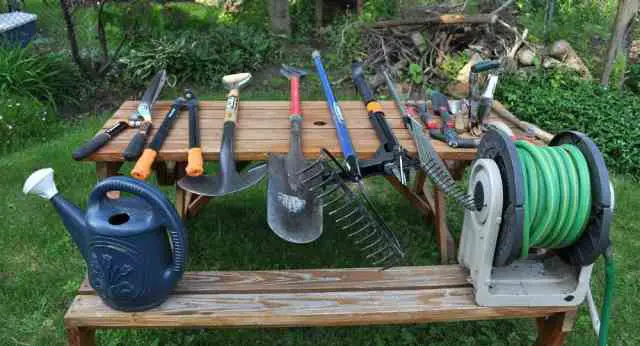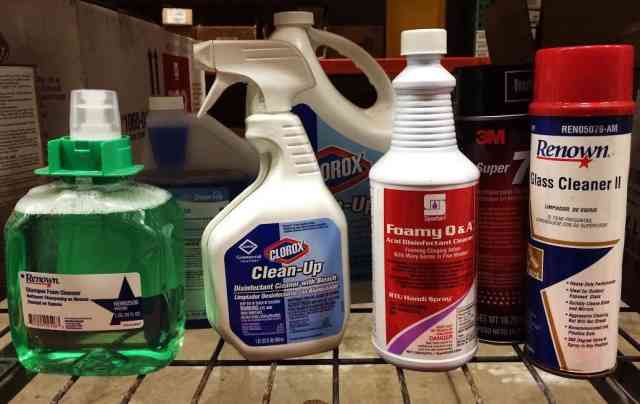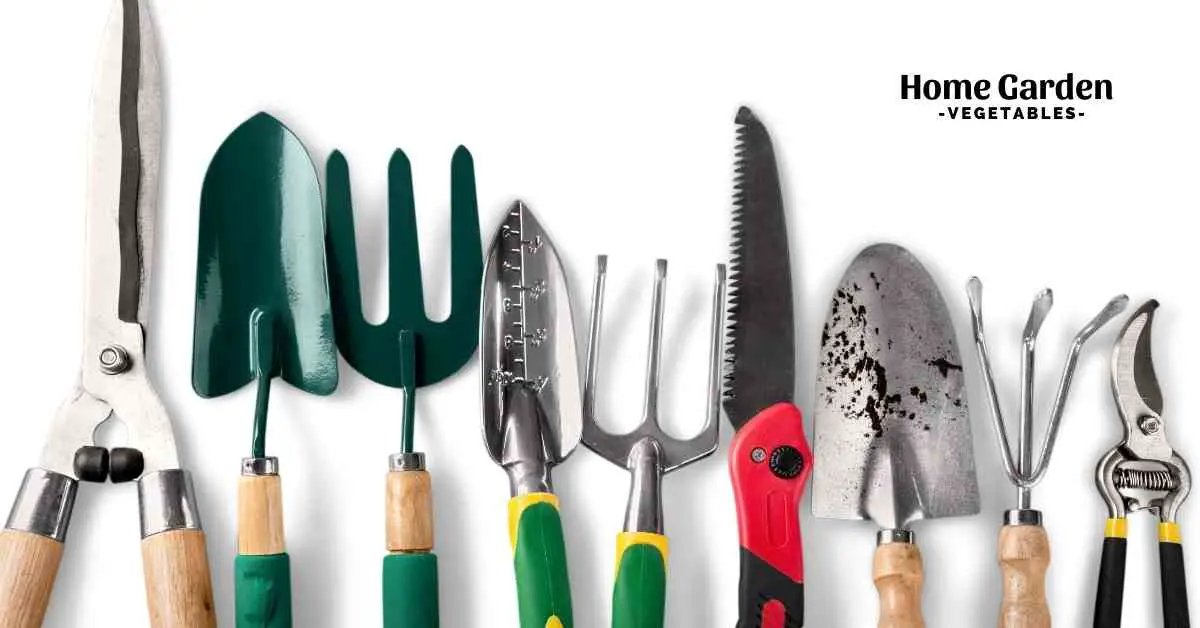Plant pathogens, including bacteria, viruses, and fungi, are spread to the plants in many ways. Besides splashes from rainwater and irrigation and wind, contaminated gardening tools also act as a carrier for diseases. Bits of disease-laden soil or plant debris can stick to the shovel and be carried to plants. Pruners are often used to remove diseased or damaged parts of the plants. While pruning an infected plant, the disease-causing pathogens can ride on your pruning shears to infect the next plant that you use the tool on.
Cleaning and disinfecting your gardening tools regularly can protect the spread of diseases through your garden. Continue reading to learn how to disinfect gardening tools the right way.
Reader Poll: What online courses would interest you?

When Should You Disinfect Gardening Tools?
Regular disinfection of your gardening tools is very important in maintaining the health of your garden.
Ideally, you should clean the tools each time you use them in the garden. However, this approach isn’t always practical. If you don’t want to sanitize the tools each time you use them on a plant, you can rotate between several tools and follow the tips mentioned below to maintain a healthy garden.
In general, you should disinfect gardening tools:
Subscribe to our newsletter!
- After working on an infected plant and before using the same tools on the next plant.
- In the spring, before the beginning of the gardening season when you start using the tools.
- Before putting everything away in the fall.
- Before using tools that have been used at a different gardening site in your garden.
Cleaning The Tools Before Disinfecting
Before you can start disinfecting the gardening tools, you need to make sure that the disinfectant can come into contact with the entire surface of the tool. For this, you need to make sure that there is no dirt or residues on the tool that you want to disinfect. Wash the tools with clean water to remove the visible dirt. Remove caked-on residues with a sharp stream of water from the hose, a scraper tool, or a stiff brush.
Cleaning the tools makes disinfection more effective. Additionally, clean tools are also easier to use. Digging the earth with a shovel with large patches of hard soil will be much more difficult to dig with than a clean shovel.
Different Products For Disinfecting Gardening Tools And How To Use Them?

Different varieties of specialized sanitizers are available at gardening centers to disinfect gardening tools. However, some commonly available household items can also be used for disinfecting gardening tools. Here’s a list of some common disinfectants you can use, along with how to use them.
- Household Disinfectants
Household disinfectants like Lysol, Pine-Sol, and Listerine can be used to clean gardening tools. They are easily available in superstores and aren’t corrosive. On the downside, little is known regarding their effectiveness against plant pathogens. Though they can be more expensive than bleach or alcohol, these disinfectants are usually diluted before using them for disinfecting gardening tools.
Just dip all the gardening tools in a bucket of diluted solution of the disinfectant of your choice and leave it to soak for several minutes before removing them.
- Disinfectant Wipes
Besides the household disinfectant available in liquid forms, you’ll also find disinfectant wipes available at most gardening stores. General-purpose wipes, including Clorox and Lysol wipes, are also good at disinfecting gardening tools. Wipe all the tools with these disinfectant wipes and dispose them after each use.
- Bleach
Bleach is an inexpensive household item and an effective tool for sanitizing gardening tools. To use liquid bleach to sanitize your tools, just add one part bleach in nine parts water and soak the tools in the solution for half an hour. Remove them from the solution and rinse them with clean water to prevent corrosion. Rinsing with water in the last step is essential since bleach is corrosive.
- Alcohol
Alcohol, in the form of ethanol or isopropyl, can also be used for sanitizing gardening tools. The good thing about alcohol is that it is effective immediately. You can either dip the tools in 70 to 100% alcohol solution or use a piece of cloth soaked in alcohol to wipe the tools. Since it’s non-corrosive, you’ll not need to rinse the tools with water after dipping or soaking them in alcohol. However, keep in mind that alcohol is very flammable, so make sure you don’t use it around a flame or any other heat source. Both ethanol and isopropyl are easily available in stores.
- Pine Oil
Pine oil is an inexpensive non-corrosive disinfectant you can use on your gardening tools. On the downside, they aren’t as effective as bleach, alcohol, or other disinfectants. To use pine to sanitize your tools, prepare a solution with one part pine oil and three parts water and dip the tools in the solution. Leave them to soak in the mixture for at least half an hour before removing them. Pine oil products are available from home-improvement centers or grocery stores.
No matter which product you choose to disinfect your tools, make sure you read all the safety instructions and follow them.
Conclusion
No matter which method you choose to disinfect your gardening tools, regular cleaning, and sanitization of the equipment you use in the garden is very important for maintaining a healthy and beautiful garden. It will help if you keep several tools at hand, so you can use others if a few are being disinfected.

